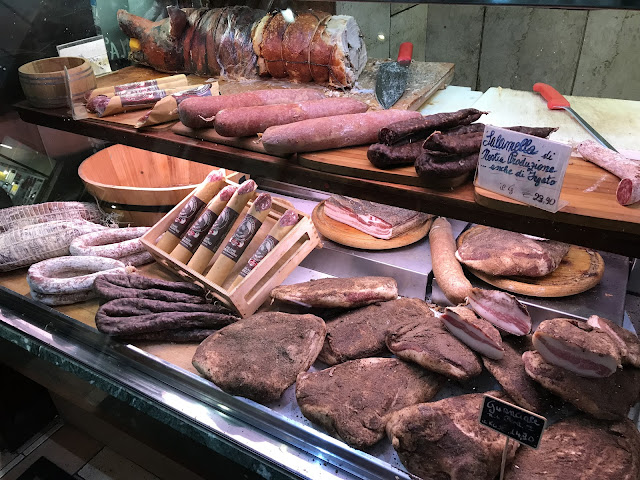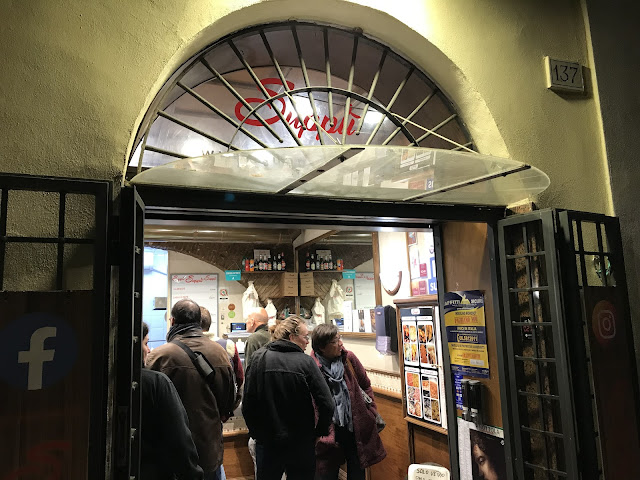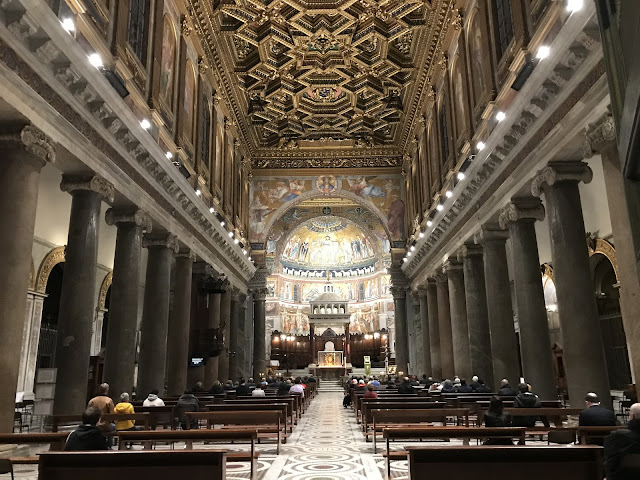November 8, 2022
“Own the crosswalk,” says Rish, our terrific food tour guide from Eating Europe. He is teaching our group of 10 how to cross the street in Rome. I, for one, really need this lesson. I am never quite convinced that the drivers are going to stop.
It occurs to me that “Own the Crosswalk” can be a metaphor for a lot of things. Especially today.
Rome, the Eternal City, reminds me that it’s still here. After the fall of an Empire. After the Dark Ages. After Mussolini. After the Nazis. After plague, fire, and flood. It’s still here. That gives me hope.
So, enough of that. Let’s talk about food! We did an awesome food tour called “Twilight in Trastevere.” Rish was an excellent guide. We tried some excellent food. We loved it.
We met Rish and the other members of our tour group in Piazza di San Bartolomeo, on an island in the middle of the Tiber River. There were 10 of us, plus Rish. In addition to teaching us about Roman food and teaching us how to cross the street, Rish taught us how to toast, how to pour a drink in Rome, and how to identify high quality gelato.
We walked across a bridge into Trastevere, which lies directly across the river from the center of ancient Rome. It used to be the Jewish ghetto, as well as the place where the working class lived and where those who were not citizens of Rome lived. Now it is somewhat trendy.
Our first stop was a little trattoria, one step above a hole-in-the-wall, called Da Enzo. It opens at 7. It was 6:30 and there was already a line of hungry foodies waiting to get in.
Rish had arranged for our group to bypass the line and sit right down at some of the tables out front, but he made us promise not to look smug.
We were served carciofi alla giudea - Jewish-style artichokes. They were deep-fried, and 100% of the artichoke was edible - and delicious. We also had some fresh, unbelievably delicious mozzarella. And we had some fabulous bread and some fabulous extra virgin olive oil to dip it in. And a glass of Prosecco. What could be better?
 |
| Inside Da Enzo |
Our second stop was Ristorante Spirito di Vino , a “slow food” restaurant. The building was a synagogue at one time, but it started out as a Roman building and we got to see the wine cellar, which was at street level 2000 years ago. You could still see some of the arches the Romans had built. An important sculpture known as “The Athlete” was found here.
After the archeology lesson, we went upstairs for “Caesar’s stew.” This recipe for stewed pork had been created by the chef after research into how foods were prepared in ancient Rome. It was tender and flavorful, and went well with the Chianti that was served with it.
 |
| Some of the products made at Iacozzilli’s |
 |
| Porchetta ready to be sliced |
 |
| Porchetta on bread, with cracklings, to fatten up our tour group |
At Gustaria al 17 we tried some fried pasta. Imagine fried mac and cheese. Yep. And Peroni, some local “average beer.”
 |
| Rish points at Ken when he finds the mozzarella surprise. |


















Amazing, you have left my mouth watering while I search for the next available date to travel to Rome! Thanks, Peggy!
ReplyDeleteOMG! I can absolutely TASTE and smell the the experience from your descriptions and the photos. I like EVERY cuisine, but Italian's my favorite, so THANKS!
ReplyDelete